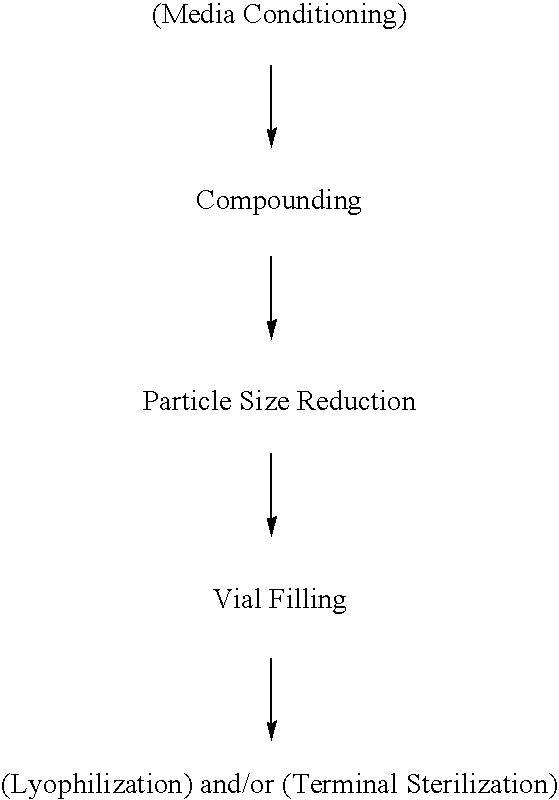Aerosol and injectable formulations of nanoparticulate benzodiazepine
a technology of nanoparticulate benzodiazepine and aerosol, which is applied in the directions of aerosol delivery, application, spray delivery, etc., can solve the problems of significant bioavailability and other problems, and achieve the effect of rapid drug dissolution and low injection volum
- Summary
- Abstract
- Description
- Claims
- Application Information
AI Technical Summary
Benefits of technology
Problems solved by technology
Method used
Image
Examples
example 1
[0237]The purpose of this example was to prepare a nanoparticulate benzodiazepine, such as lorazepam, formulation.
[0238]An aqueous dispersion of 10% (w / w) lorazepam, combined with 2% (w / w) polyvinylpyrrolidone (PVP) K29 / 32 and 0.05% (w / w) dioctylsulfosuccinate (DOSS), could be milled in a 10 ml chamber of a NanoMill® 0.01 (NanoMill Systems, King of Prussia, Pa.; see e.g., U.S. Pat. No. 6,431,478), along with 500 micron PolyMill® attrition media (Dow Chemical Co.) (89% media load). In an exemplary process, the mixture could be milled at a speed of 2500 rpms for 60 minutes.
[0239]Following milling, the particle size of the milled lorazepam particles can be measured, in deionized distilled water, using a Horiba LA 910 particle size analyzer. The initial mean milled lorazepam particle size is expected to be less than 2000 nm.
PUM
| Property | Measurement | Unit |
|---|---|---|
| particle size | aaaaa | aaaaa |
| particle size | aaaaa | aaaaa |
| aerodynamic diameters | aaaaa | aaaaa |
Abstract
Description
Claims
Application Information
 Login to View More
Login to View More - R&D
- Intellectual Property
- Life Sciences
- Materials
- Tech Scout
- Unparalleled Data Quality
- Higher Quality Content
- 60% Fewer Hallucinations
Browse by: Latest US Patents, China's latest patents, Technical Efficacy Thesaurus, Application Domain, Technology Topic, Popular Technical Reports.
© 2025 PatSnap. All rights reserved.Legal|Privacy policy|Modern Slavery Act Transparency Statement|Sitemap|About US| Contact US: help@patsnap.com

